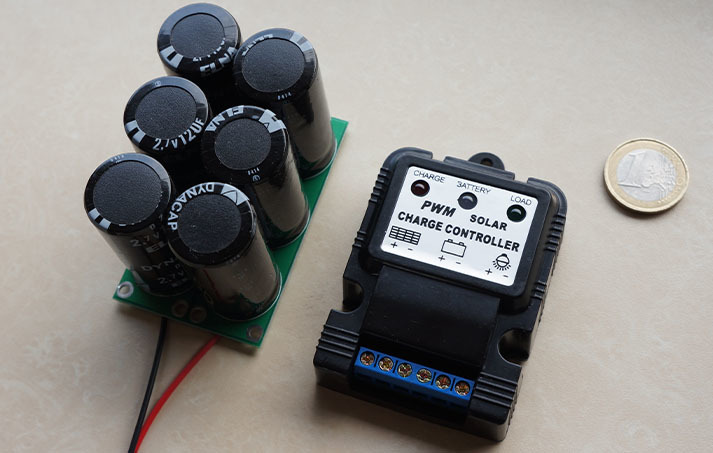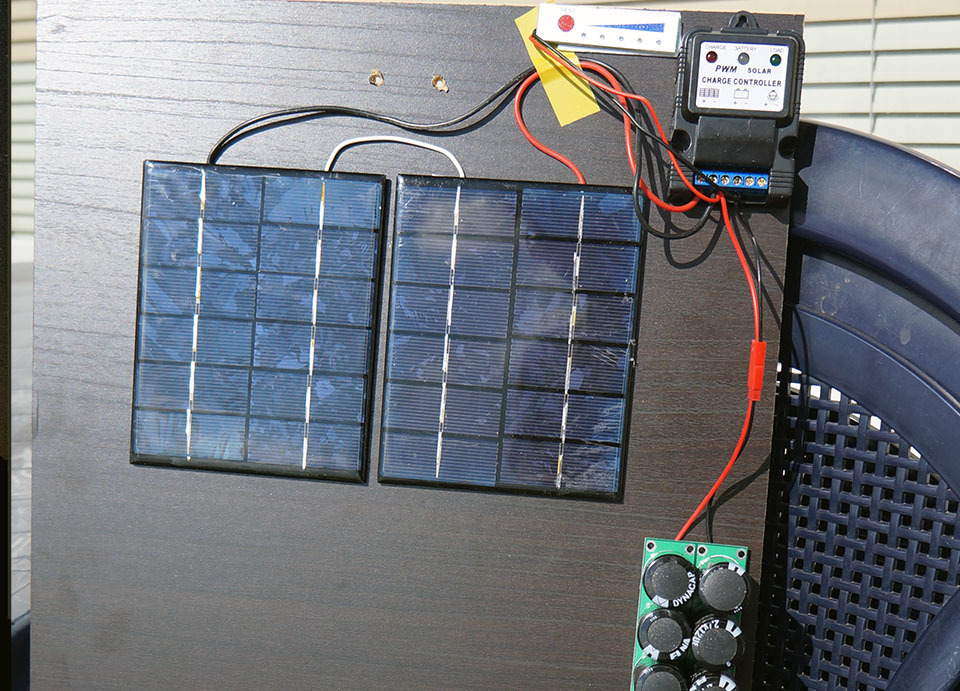oh, and how bad was it? 
More or less like this, he has the same cheap charger/discharger, they work really good !
I mounted it on an old PC power supply
I have a clone I think, anyway, if you connect them with an old PC powersupply you can do many things.
a very nice menu option is ‘storage mode’, the charger checks the lipo and if its full it start discharging to 70%, if its empty it starts charging to 70%.
one thing you must watch:
If you set it to LiPo discharge, it stops (preprogrammed) @ 3.2 V
What I do, i discharge LiPo with NimH selected , there I can set amps and voltage, so I set that to 2.8 V, then I know its really empty.
Then I set it back to LiPo and charge (it stops preprogrammed @ 4.2 v and when the current is < 0.01 A
Now you can read on the display the real capacity.
To spare your battery’s discharge @ 0.2 C and wait 10 minutes between discharging and charging.
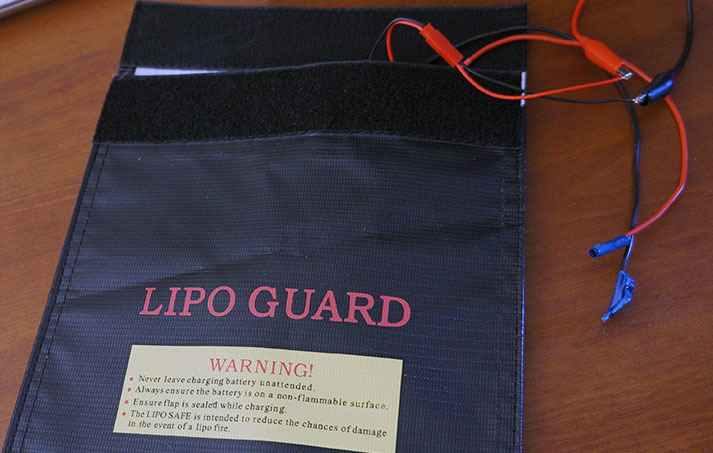
always be extra carefull when charging LiPo batteries !
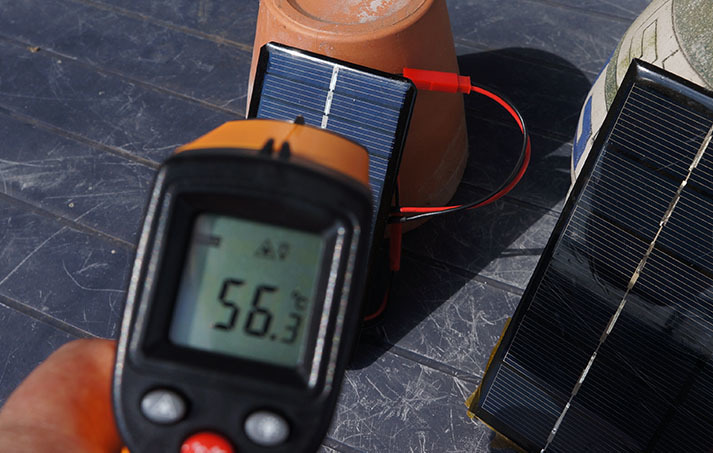
these panels get… hot
I’m experimenting with a solar panel & supercaps.
The start looks promissing, but the main challenge is the power consumption of the LoraWan communication with the 3.3V RN2483.
The delay of the gateways is a problem for me because I live in the center of large white spot on the map in the Netherlands without existing coverage from TTN gateways. But better to wait and receive a solid product. 
In case you want to check or add some suggestions, the URL is:
Best regards,
Peter
nice project Peter … not much sun lately 
I received last week some supercaps, small ones 0.47 uF and bigger ones to do some measurements, like on the gammon site
-
The LIBRARY basement part 1
I’m afraid they don’t deliver enough Tx current and that the voltage drop to much, but I haven’t started testing yet
Oh and you should really talk to Charles CH2I … he is THE lowpower low voltage specialist 
Still no sun today 
I’m also curious how it is going to perform.
In case I need more current it is also possible to use multiple series banks in parallel but then it becomes more complex with balancing resistors in the supercap bank.
Today I tested a RN2483 for connectivity to ensure that is works, and it did! Still had to use the KPN LoraWAN network because there is no TTN gateway in range of my house. I used a terminal session and AT commands to insert the necessary config settings and saved in to the EEPROM of the RN2483. This simplifies the sketch on the Atmega328P.
Three challenges that I’m struggling with:
- my 3.3V 8MHz breadboard Atmega328P can only be programmed with ArduinoISP programmer on 3.3V, I don’t have a working serial interface with my computer, think it’s the reset pin that is blocking
- Autobaud of the RN2483 isn’t working and 57K speed is too high for soft serial of 8MHz MCU
- I thought my situation would be simple and easy because my board is already 3.3V so no level shifter needed to the RN2483 and ISP programmer use had benefit that UART is unused so available for the communication with the RN2483 but Serial.print didn’t work or is this logical?
And don’t know the person you mentioned but every help is welcome. 
Best regards,
Peter
this is low power work from Charles CH2I … very interesting
btw I didn’t realize that you need a ‘balancing’ board for supercaps
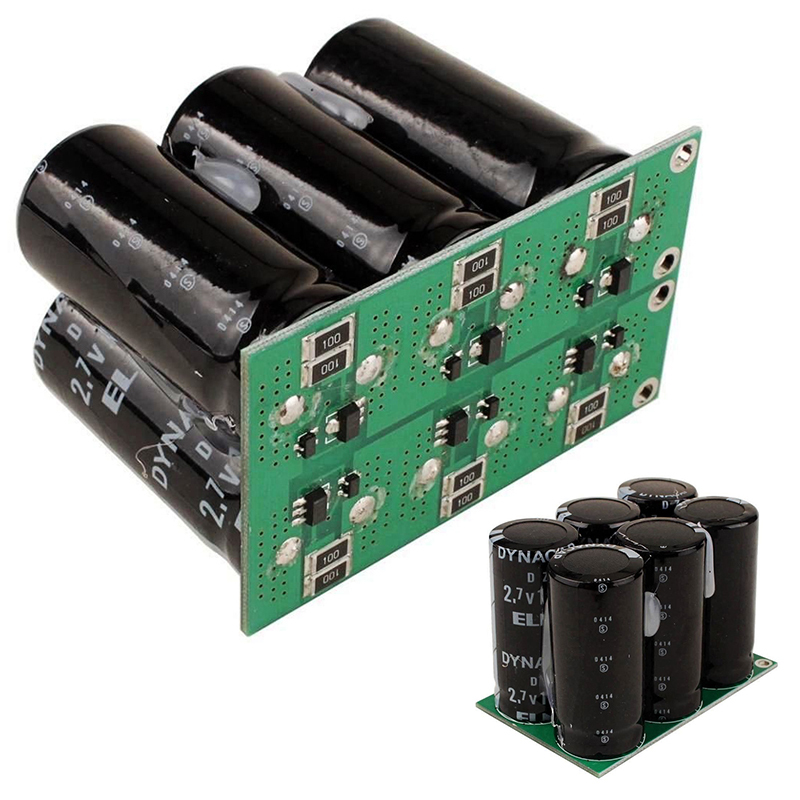
Looks impressive!
It should be could to first really fully charge them and leave them for a day.
With your 5.5V caps in parallel you don’t need such a balancing system if I correctly understood.
I have similar caps like you ordered but one small disadvantage is that they are not breadboard friendly to experiment with. That is way I now use other ones.
Today the first successful transmissions using the RN2483 and Atmega328P powered by 2 supercaps. 
I am wondering if anyone has experience with the following solar charging modules:
-
LiPo Rider Pro from SeeedStudio
https://www.seeedstudio.com/LiPo-Rider-Pro-p-992.html -
Generic solar charger on ebay:
http://www.ebay.com/itm/5V-Solar-Charger-Receiver-Module-Solar-Controller-3-7V-Lithium-Battery-Charger-/272493130063?hash=item3f71db314f:g:s5gAAOSwUsJYWkod
The LiPo Rider has a only 3 reviews on Amazon, with one indicating the board does not work as advertised.
Any comment is appreciated.
Hi,
for those of you with more electrical engineering experience, would a goldcap or a super capacitor be a good choice to power a LoPy in the field, if it gets additionally supported by a solar cell?
Just thinking about what is better in terms of long live…
https://www.reichelt.de/Speicher-Elkos/2/index.html?ACTION=2&LA=3&GROUPID=3148
As a solar cell, this one may be more than capable for such an application:
https://www.wattgeizer.com/et-solar-et-m53605-5-wp-solarmodul-monokristallin-12v?c=36
The LoPy is only an example. It’s more about the type or class of device (low power device) and the powering options for really long periods without having to worry about charging cycles of a normal rechargeable battery.
Lothar
I’m no electronics expert but would suggest a lower voltage solar panel and look for the amount of current it can supply under normal conditions.
If you standardize for lower voltage mcu & lora module like 3.3v and use simple components to lower voltage like a LDO than avoid a 12V panel because the voltage difference is largely wasted as heat.
If I’m correct then gold-cap is a brand name that also supplies supercaps.
Knowing if it fits depends on usage & sleep scenario, energy consumption of mcu & lora module, etc. This determines the needs for power supply.
I’m expertimenting & learning with something similar, project is now “on hold” till some components (328PB and RN2483A) arrive in June.
@lollisoft In normal situations you’ll not have to worry about wearing out your battery, either LiPo or NiMH.
I’ve been running small solar powered NiMH projects for many years and the cells are still in excellent condition. The main issue is surviving the dark winter months (december and january). A Super capacitor has in many situations insufficient capacity for these dark months.
You could use a very large panel so that it would fully charge the supercap even on a very dark overcast winter day. That would work and would get you through the night, but the solar panel and super cap size and costs are probably much higher than a smaller solar cell combined with (a) chemical rechargeable cell(s).
You should look at LiFePo4 batteries - they are far easier to use and harder to destroy that either LiPo or NiMH. They are so safe compared to a LiPo to make LiPo look like an explosive.
I have only very respect after seeing some burned lipos (on youtube). They tried to kill them, but after the smartphone battery issues with samsung, I try to keep at least my quadcopter lipos in the basement.
And I got one copter killed by a shortage after a crash (burned down a connector) and I had to run stopping the fire!
If super caps are inpractical, then I opt in for a NiMH or two. They are not as dangerous in my mind as lipos 
From the testing I have seen, the LiFePo4 are meant to be as safe as, if not safer than NiHM
finally arrived… a 2.7 V 120 F supercap 'assembly
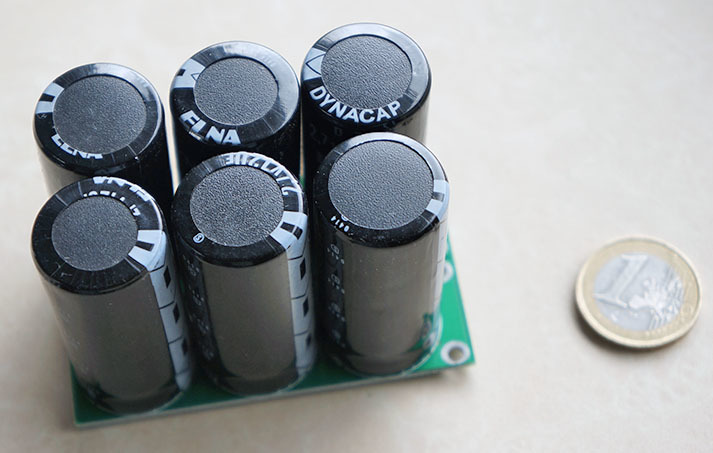
in fact its 6 x 2.7v in series
- maybe it was not my best 'buy decision
 lets test it myself
lets test it myself
just an idea, can you use a cheap Solar Panel Charge Controller and instead of a normal battery use a supercap ?
will try … 
